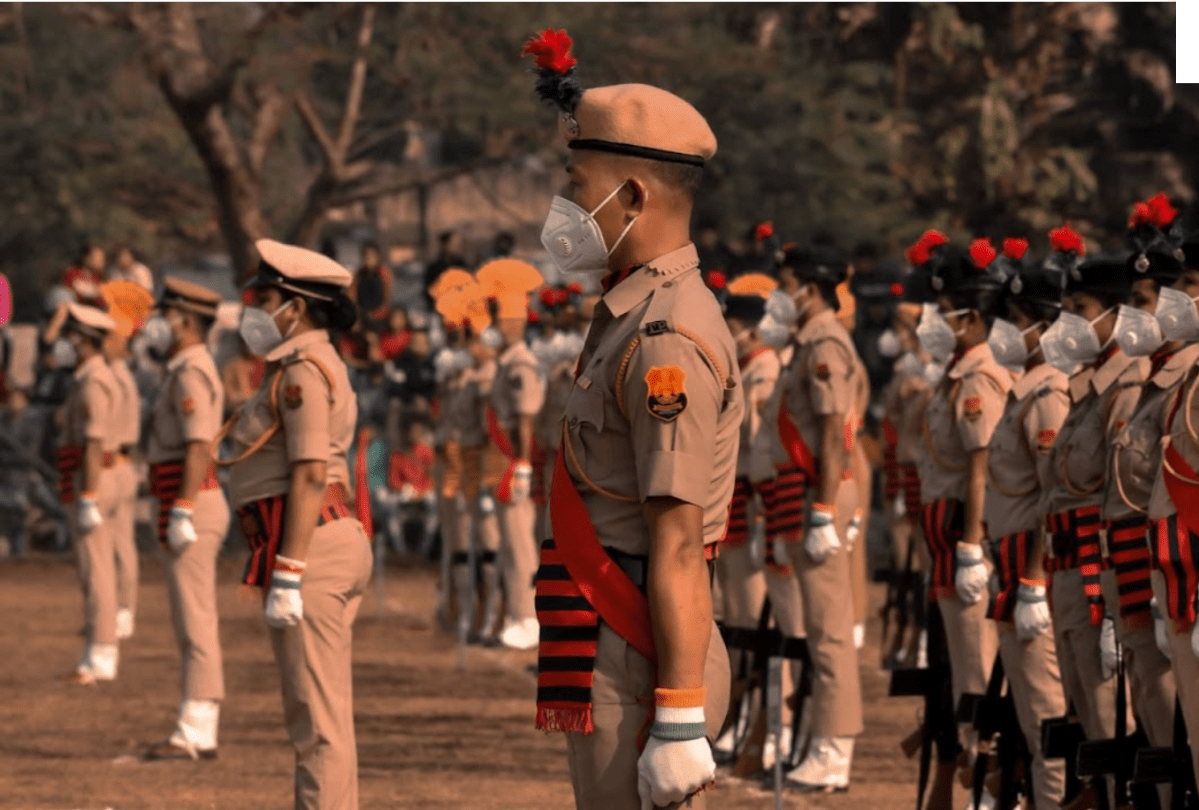Celebrating 75 years of Independence, the Beating Retreat marked the end of this year’s Republic Day through a mesmerising display of lights, history, and inspiring tunes. Each year, the Beating Retreat showcases the grit and strength of the Indian Armed Forces, the continuation of tradition, and acts as a record of history. However, recognising how far we have come also makes one wonder how far we have yet to go.
In 2018, the government of India decriminalized section 377 of the Indian Constitution. This marked a historic moment in the history of LGBTQ+ rights in India. In the four years since, the Indian Armed Forces have not explicitly recognised the ripple effects of the judicial move, nor have they extended any visible hand to include the community into their forces. In January 2022, the Ministry of Defence rejected a script for a film, directed by Onir, that told the true story of a gay ex-Army officer. The true story affirms that people from the LGBTQ+ community are present in the Indian Armed Forces — however, the institution staunchly refuses to acknowledge them. In 2019, a statement stressed that the Indian Armed Forces were not yet “westernised” and were still quite “conservative.” While it is true that the Indian social and cultural landscape is different from the west – and it may not be fair to compare the two – nonetheless, perhaps the west should be viewed as a society to take note of, rather than one that is unfathomable for India. Moreover, countries in the west are not the only examples. Each country has its shortcomings concerning unequivocal acceptance and inclusion. However, Nepal, the Philippines, and Israel are a few examples of countries that accept service in the military regardless of one’s sexual orientation.
In the Indian Armed Forces, though they can not punish those in the Army for their sexuality, they can punish them for carrying out certain sexual acts. The Army Act of 1950, section 46(a) states that any “disgraceful” conduct of an “unnatural” kind may lead to punishment. The phrasing of this act is vague, but can be imposed on officers depending on whether those in authority view the encounters and relationships between LGBTQ+ individuals as “unnatural.” The LGBTQ+ community is often ignored and effaced from both within the forces, and from those who wish to serve their country. The first crucial step is that the Armed Forces recognize the existence of the community, after which the system and the state have to collectively work to embrace them into the force.
The discourse around gender and sexuality has especially been prominent in the past few decades — as laws are modified, views are changing, and people are aiming to be more accepting. The attitude of the Indian Armed Forces towards women differs slightly from their attitude toward the LGBTQ+ community. Women are proudly recognised, and when one visits the official page of the Indian Army, the radiant smiles of five women officers greet them under a section titled ‘Our Ethos’. In February 2020, the Supreme Court granted Permanent Commission (PC) to women officers, irrespective of their number of years of service. Previously, to argue against PC, the government had used excuses such as “motherhood”, “child-care”, and “biological requirements.” In September 2021, the Supreme Court declared that women were now allowed to appear for the National Defence Academy (NDA) exam, and nearly a third of the 2021 exam applicants were women.
After the landmark decision was taken, only 19 women cadets were inducted into the NDA, and the Centre justified it by stating that they did not have the necessary infrastructure, and they would be ready by May 2022. However, in January 2022, the Supreme Court had to demand the Union Government to explain its reasons behind limiting the intake of women cadets in the NDA to 19 again – even after their assurance the previous year that they would be ready.
Though the Supreme Court is taking measures to include women in the Indian Armed Forces, the decisions are either long-overdue or are not properly reinforced by the government. On 1st February 2022, Defence Minister Rajnath Singh stated that the induction of women fighter pilots was now a permanent scheme. However, despite its many reforms to include more women, the government has also stated that women are “physiologically weaker”, and has argued that women should not be put in commanding roles due to the “male troops not being mentally schooled to accept them”. While new policies and judicial moves for the inclusion of women are welcome, they must be accompanied by a shift in mindsets. Women in the Indian Armed Forces continue to prove themselves as redoubtable members, and making assumptions about their capability and assuming that those in service will not accept them is limiting the scope of what the Indian Armed Forces can achieve.
For decades, The Indian Armed Forces have remained a formidable and inspiring presence. With each march at the Beating Retreat, one can feel the echoes of generations of people who have selflessly served their country and continue to do so. However, among the assemblage of people who serve the country, there lie those who are grappling with their sexuality and are fighting to be recognised regardless of their gender. Perhaps next year, or the years after that, one can continue to look upon the Indian Armed Forces and be irrevocably proud, as they have every year, while simultaneously being comforted with the knowledge that among its rank are people whose sexuality is recognised, whose gender is empowered, and first and foremost are individuals who are serving free of discrimination and prejudice.
Shree Bhattacharyya is a student of English literature and Media Studies at Ashoka University.
We publish all articles under a Creative Commons Attribution-Noderivatives license. This means any news organisation, blog, website, newspaper or newsletter can republish our pieces for free, provided they attribute the original source (OpenAxis).

